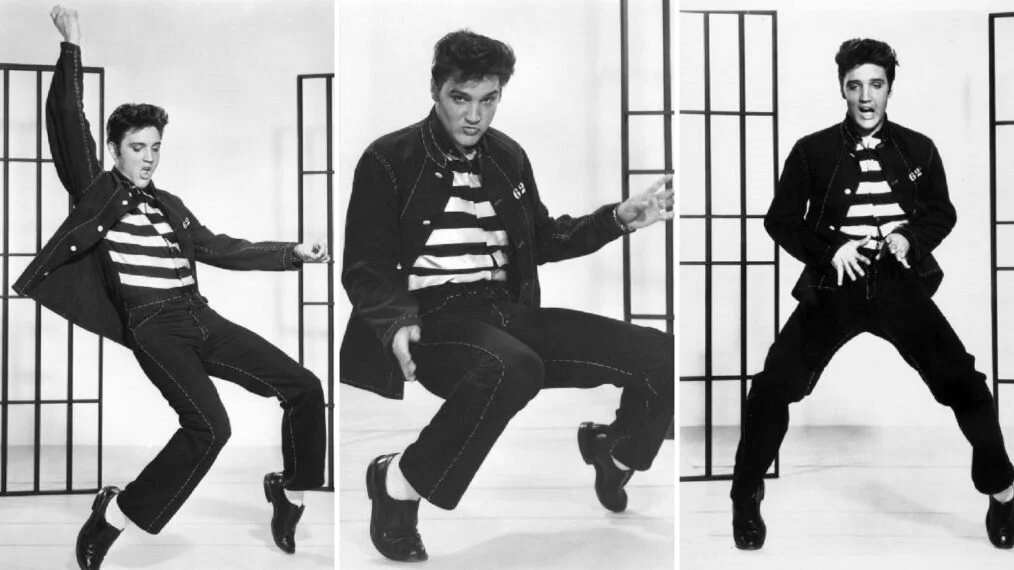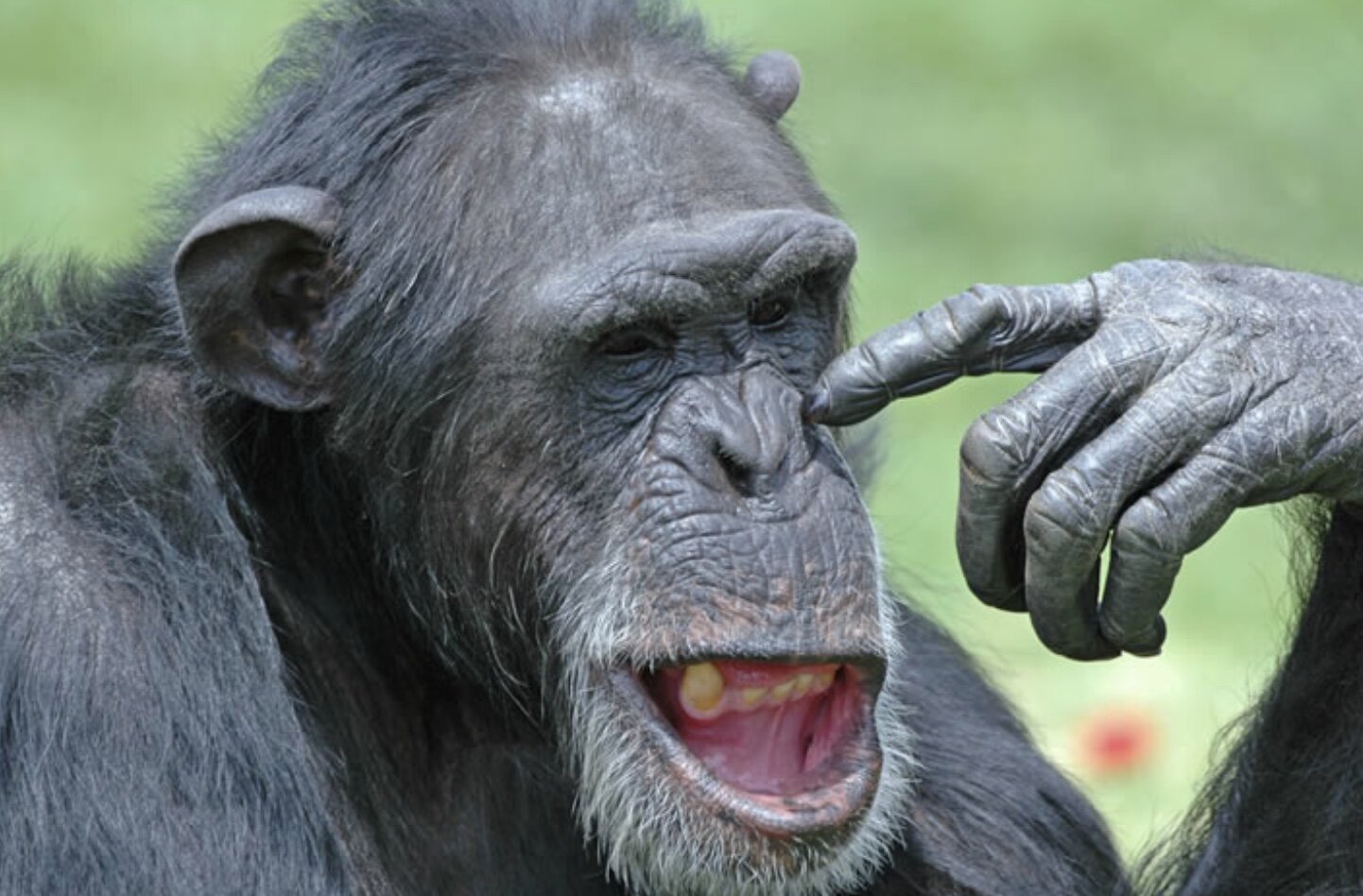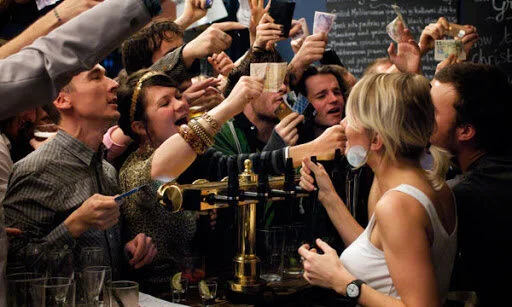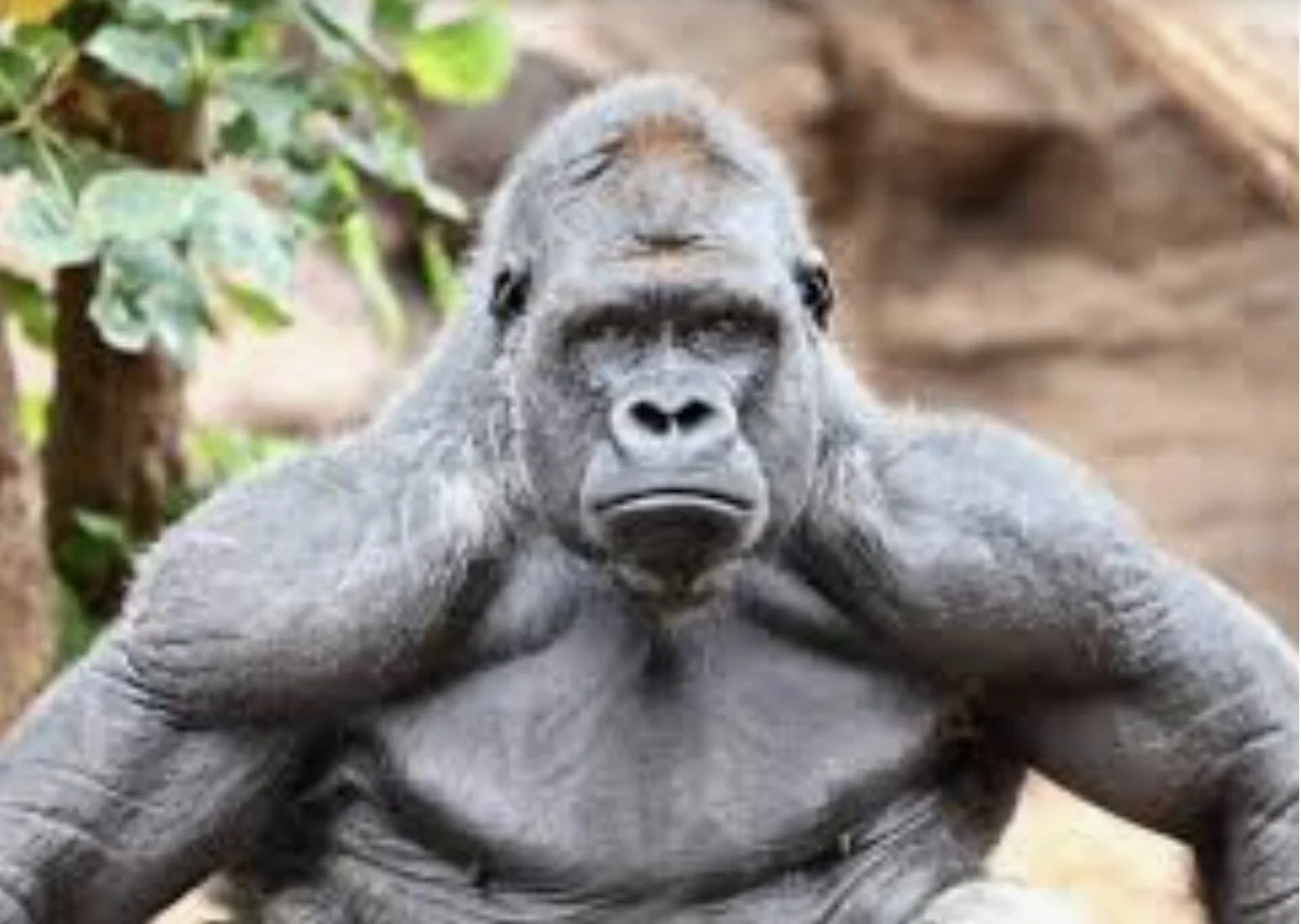By The Landlord
“I was much further out than you thought
And not waving but drowning.” – Stevie Smith
"Language In their very gesture.” – Shakespeare, A Winter's Tale.
“There are many thoughts and feelings, but only a few gestures; and the mask has only half a dozen grimaces to express a thousand meanings.” – Aldous Huxley
“Personality is an unbroken series of successful gestures.” – F. Scott Fitzgerald
“The fate of peoples is made like this, two men in small rooms. Forget the coronations, the conclaves of cardinals, the pomp and processions. This is how the world changes: a counter pushed across a table, a pen stroke that alters the force of a phrase, a woman's sigh as she passes and leaves on the air a trail of orange flower or rose water; her hand pulling close the bed curtain, the discreet sigh of flesh against flesh.” – Hilary Mantel, Wolf Hall
"Does the body rule the mind
Or does the mind rule the body?
I don't know." – The Smiths
A raised eyebrow, a clenched fist, a shoulder leaning forward, a hand on hip. A scratch of head, a wrinkled nose, a wave of arm, a half-struck pose. Some may be instinctive and subconscious, others deliberate, even done, not merely on the spur, but with practice, with forethought. But then again, what is our brain really making us do, consciously, or otherwise? When hiding true feelings, are we actually revealing them? Do we mirror others we admire without realising it, or on purpose? Is the body suddenly doing the thinking, while mind has switched off? Are gestures learned or innate? What does physical language tell us about others, or ourselves? Is it one that as we've evolved, we’ve lost, simians now dumb of the most universal vocabulary of all? Or simply have forgotten how to control? Or do we still, as social creatures, always watching, copying, reacting, without realising it, continue to – ape?
Girl in the frame: Madonna
Body language poses many questions, and because of that the answers are often in the affirmative, but then again, because we are complex, divided and changeable creatures, contradictory. A hand gesture often means more than one thing at once. So does another person putting their hand on your arm or shoulder mean attraction, or manipulation? Does looking at the floor or ceiling mean shyness, boredom or frustration? Physical expressions that may be meant or perceived to be one thing can are not that simple. Expressions can be sweet, or sour, sexual, predatory, aggressive, submissive, or all about power.
When Elvis Presley burst upon the scene in the 1950s to sent millions of teenage girls into a swoon and boys in an aping admiration, his overtly sexual hip-thrusting moves where shocking to the establishment and older generations, like a beautiful slicked-back simian threatening the establishment territory. But how much were these gestures planned, or simple involuntary, his mind and body reacting to the music? Were they, to a certain extent, subconscious and entirely natural?
Then again, when Madonna was at the height of her fame and success during the Vogue period, was anything she did, in fact, natural? Her look appeared to be entirely aping Marilyn Monroe, and her body language entirely rehearsed, focusing the eye on her face and her body, a celebration of skin-deep surface, no more, no less.
Armfuls of poses
Much is said about the language of the body and physical gesture, but it may be as much individual as it is universal. A poker face can hide many emotions. Hands can do all kinds of things that mean very little. But perhaps what put them altogether and they reveal our intent, even before we realise and hide it.
Why are some cultures highly gesticulatory, others, far more still and silent? Why do dogs wag theirs when happy, but cats swish their tails when annoyed, are feeling snappy and potentially – violent? Why does one rub its cheek on every surface, the other sniff fellow arses and roll themselves in the soil? What should you do when a horse's ears go forward or back? How can you tell what an owl is thinking? Or a crocodile? Or a bat? When is a hyena laughing, or crying? And does touching your nose or ear or chin really mean you're lying?
Who nose what this means?
This week then, it's time to scratch an involuntary primal itch, and stitch together a playlist on the topic about actions made without words of sound, into a form, contradictorily, that joins lyrics and music. So songs about gestures includes anything from waving and winking to giving the finger or V-sign, pretty much any movement of the hand, face, fingers, or arm or leg. This is a language might involve all kinds of tell-tale behaviour, but it all involves movement of the body, involuntary or otherwise, variously telling, depending how you see it, the truth, or lies, mentioned in song titles or lyrics, in the main, or incidental detail.
Love may well be a motivator for this topic, in ways the body expresses feelings without realising it, for contradictory to true feelings. “Why do they do that when they really feel this?” or other confusions are among one of the driving forces of so many songs.
“Gestures, in love, are incomparably more attractive, effective and valuable than words,” wrote the French 15th- and 16th-century scholar, writer and monk Francois Rabelais, but the word “gesture” in the English language was likely one of many introduced by a certain William Shakespeare. He used in The Winter’s Tale, as above, but the subject comes the fore even more so in Hamlet. When Hamlet’s mother Gertrude remarks that he is wearing black, acting odd in his demeanour, he unleashes an ironic tirade about his body language, instead of explaining directly that he’s rather pissed off that she’s married his uncle so soon after the suspicious death of his father.
“Tis not alone my inky cloak, good mother,
Nor customary suits of solemn black,
Nor windy suspiration of forc’d breath,
No, nor the fruitful river in the eye,
Nor the dejected havior of the visage,
Together with all forms, moods, shapes of grief,
That can denote me truly.
These indeed seem,
For they are actions that a man might play;
But I have that within which passeth show,
These but the trappings and the suits of woe.”
Much is said about actions that are “played”, and the nature of body language comes in even more complexity, and irony, when he later remarks upon the actor in the play within the play who can pretend passions to the role of Hecuba, through his “visage” and “aspect” while Hamlet’s role as player and played within this play, having a volcano of real feelings, is wrestlings with then entire issue of what is given away or pretended by body language, in a situation infinitely more complex:
“Oh, what a rogue and peasant slave am I!
Is it not monstrous that this player here,
But in a fiction, in a dream of passion,
Could force his soul so to his own conceit
That from her working all his visage wanned,
Tears in his eyes, distraction in his aspect,
A broken voice, and his whole function suiting
With forms to his conceit? And all for nothing—
For Hecuba!
What’s Hecuba to him or he to Hecuba
That he should weep for her?”
And early in Othello, who the king who becomes the victim of Iago’s evil plot to inspire jealousy, the great irony is that Othello expresses the need for showing his true feelings at all times, to “wear my heart upon my sleeve” and display body language with candid honesty, one that he completely misreads in others.
For when my outward action doth demonstrate
The native act and figure of my heart
In complement extern 'tis not long after
But I will wear my heart upon my sleeve
For daws to peck at I am not what I am.”
Body and mind are in constant dialogue and tension, which in turn is a very potent formula for any artform, particularly song. So this week’s topic is all about outwards signs of emotions, thoughts, reactions and intentions, and how the body shows or hides anything from happiness, or sadness, being focused, or confused, afraid or confident, from head to feet. Oculesics is the study of eye behaviour in body language. Have you got the look?
The play’s the thing …
Haptics the subject of touching, from formal handshakes to tenderness and caring, to intimacy and sexual. Studies reveal how salesman use this to close a deal or employers used as a form of persuasion, and hand on a shoulder to express control. "Touch is a reciprocal action, a gesture of exchange with the world. To make an impression is also to receive one, and the soles of our feet, shaped by the surfaces they press upon, are landscapes themselves with their own worn channels and roving lines. They perhaps most closely resemble the patterns of ridge and swirl revealed when a tide has ebbed over flat sand,” says the writer Robert Macfarlane.
And closely related to touch, there is proxemics, the study of how people use, protect or invade space, and how when those distances in different contexts are breached, or made larger it affects the others. How different things are now that we have had to adapt 2-metre rule than the pre-Covid-19 era, where it was completely normal to crowd together and squeeze past each other in the bar. How long is it since any of us have tried the language of trying to get served next?
Are you being served? What gestures work best?
And so in our own crowded Song Bar, there are heaps of customers vying for attention to say more about the subject of gestures and body language. How can they attract our atttention? Perhaps with the rules of attraction. Philosopher Henry David Thoreau is a true regular, and reckons that "You know about a person who deeply interests you more than you can be told. A look, a gesture, an act, which to everybody else is insignificant tells you more about that one than words can."
But the writer Neil Strauss is more cautious. “Never ask a woman if you may kiss her. Instead, learn to read body language,” he adds dangling a fiver, hopefully.
Yet has modern life killed off our ability to read body language, or have we instead lost other forms of vocabulary, and now express ourselves by shorthand, time-saving thumbs up emojis lacking nuance and subtlety? “Technology is making gestures precise and brutal, and with them men,” said Theodor Adorno, the German philosopher, sociologist, psychologist, musicologist, and composer, but he died in 1969
Gretchen McCulloch, who in her book Because Internet: Understanding the New Rules of Language, thinks that we now simply mixing old and new signals via technology. “Thinking of emoji as gestures helps put things into perspective if we're tempted to start thinking, ‘If words were good enough for Shakespeare, why aren't they good enough for us?’ We can pause and realise that plain words weren't actually good enough for Shakespeare. A lot of what Shakespeare wrote was plays, designed not to be read on a page, but to be performed by people.”
Is body language one of the past, the our future? Kanye West has somehow made it into the Bar too, and reckons: “I don't think people are going to talk in the future. They're going to communicate through eye contact, body language, emojis, signs.” In that case, why can’t he just stop talking, then?
There’s inevitably some tension when Kanye starts mouthing off, so people are suddenly starting to turn away and feel a little awkward. Sometimes it’s best to just carry on, as composer George Crumb says, ”the retrospective glance is a relatively easy gesture for us to make."
But as author Rachel Simmons puts it: "There is no gesture more devastating than the back turning away."
The poet, dramatist and entrepreneur Michael Bassey Johnson reckons that the quieter ones, unlike Kanye are the ones to watch in any social situation: “An introvert talks more than an extrovert because when the mouth is closed, the mind is opened.”
Anais Nin, prolific French-Cuban-American diarist explains how for her, despite inhabiting a world of words, gestures are everything: “Whether because I am a Latin, or because I am a neurotic, I have a need of gestures. I am myself expressive, demonstrative; every feeling I have takes on expression: words, gestures, signs, letters, articulateness or action. I need this in others.”
But how do musicians see body language and gesture? The great master of the mouth organ Toots Thielemans, highlights how copying this played an early role in his development: "My parents had a pub and each Sunday there was an accordionist. They have told me that when I was in my cradle, I already was imitating the gestures of the musician."
For any orchestra, a conductor’s gestures aren’t meant to be ambiguous, but precisely interpreted. New York’s James Levine the highly expressive but also controversial figure best known from Metropolitan Opera. Some of the gestures he has made are less than ambiguous, but throws his stick our way with this piece of irony: “There is no relationship between the gestures and what an orchestra will do."
James Levine: Expressively always sticking it somewhere
Meanwhile the wonderful actor Richard Griffiths is here, famous most of all for playing the fabulous Uncle Monty in Withnail and I. His attention to body language goes back to his upbringing: “My father taught me things about body language that psychologists have been catching up with ever since. He always knew when I was lying, because my posture was all wrong.”
But for other artists gestures come into play beyond the music as a larger part of the performance. Erykah Badu is in the house, and describes her greatest inspiration: "Billie Holiday was this person, this singer, this beautiful diva who could move the audience with the slightest gesture of her hand."
Deborah Bull, former dancer and former creative director of the Royal Opera House, suggest that body language is a primal form of communication: “Body language is a very powerful tool. We had body language before we had speech, and apparently, 80% of what you understand in a conversation is read through the body, not the words.”
One corner of the Bar is now filled with French visitors, who seem to have an innate understanding of using the body for communication.
"For the theatre one needs long arms; it is better to have them too long than too short. An artiste with short arms can never, never make a fine gesture,” says he literary theorist Roland Barthes.
Feeling crossed
Mime artist Marcel Marceau puts his hand and face on, and compares his art to a more static form. "What sculptors do is represent the essence of gesture. What is important in mime is attitude."
Christine and the Queens is also here, and movement is very much part of her act: “I've always really been interested in observing people's postures, the way they speak with their hands, the way they communicate things with their body language.”
And yet now everyone is a fan of dance. The painter Joshua Reynolds describes how formality kills something in our natural movement: "All the gestures of children are graceful; the reign of distortion and unnatural attitudes commences with the introduction of the dancing master."
American dancer and choreography Isadora Duncan makes the connection between the fine details of movement and words:
"It has taken me years of struggle, hard work and research to learn to make one simple gesture, and I know enough about the art of writing to realise that it would take as many years of concentrated effort to write one simple, beautiful sentence." That’s good to know us writers are appreciated …
Talking of writers, the Saint Lucian poet and playwright and Nobel prizewinner Derek Walcott explains that gestures are very much part of his culture: “I come from a place that likes grandeur; it likes large gestures. It is not inhibited by flourish. It is a rhetorical society. It is a society of physical performance. It is a society of style.”
And here’s Milan Kundera: "A gesture cannot be regarded as the expression of an individual, as his creation (because no individual is capable of creating a fully original gesture, belonging to nobody else), nor can it even be regarded as that person's instrument; on the contrary, it is gestures that use us as their instruments, as their bearers and incarnations"
Body language, particularly as expressions aggression and dominance are very much key in sport. Ronaldo’s many goals are often followed with a display that almost certainly mimics the natural world and our other cousins.
Taut lessons or natural response?
But football can be an artform for more subtle skills, such as the feint. Here’s a demonstration:
Gestures are also part of a less glamorous working world. Handshakes are strange, and the Donald Trump version even stranger. But putting him out of our minds now, this is summed up by Rebecca West: “International relationships are preordained to be clumsy gestures based on imperfect knowledge.”
From one disgraced leader to a statesman with true status, Nelson Mandela is here, talking about his days as a lawyer and how body language played a role in his work: “As an attorney, I could be rather flamboyant in court. I did not act as though I were a black man in a white man's court, but as if everyone else - white and black - was a guest in my court. When trying a case, I often made sweeping gestures and used high-flown language.”
So then, ending on this great figure, it’s time to end my own sweeping gesture towards this topic and turn you towards you, learned Bar patrons, and this week’s guest behind the pumps, who will know doubt reading all your musical body language most keenly, being the highly perceptive pejepeine! Place your songs in comments below in time for last orders on Monday at 11pm UK time, for playlists published next week. Let’s put body, and soul into it.
New to comment? It is quick and easy. You just need to login to Disqus once. All is explained in About/FAQs ...
Fancy a turn behind the pumps at The Song Bar? Care to choose a playlist from songs nominated and write something about it? Then feel free to contact The Song Bar here, or try the usual email address. Also please follow us social media:: Song Bar Twitter, Song Bar Facebook. Song Bar YouTube, and Song Bar Instagram. Please subscribe, follow and share.
Song Bar is non-profit and is simply about sharing great music. We don’t do clickbait or advertisements. Please make any donation to help keep the Bar running:










